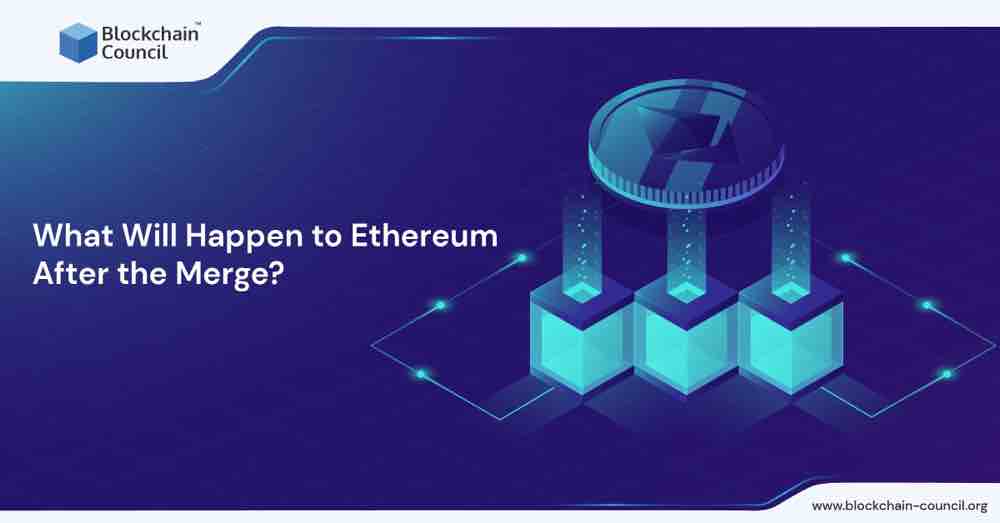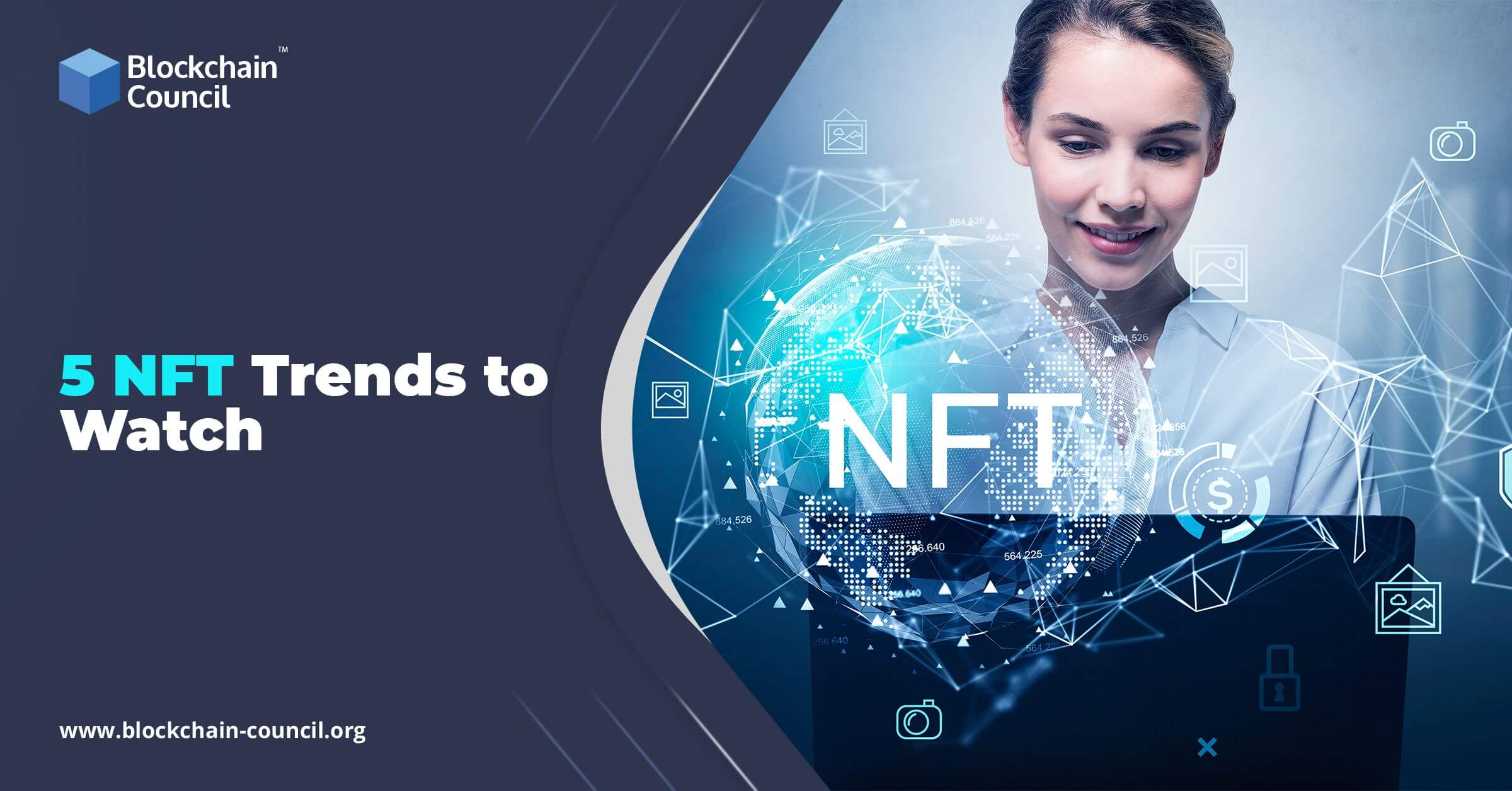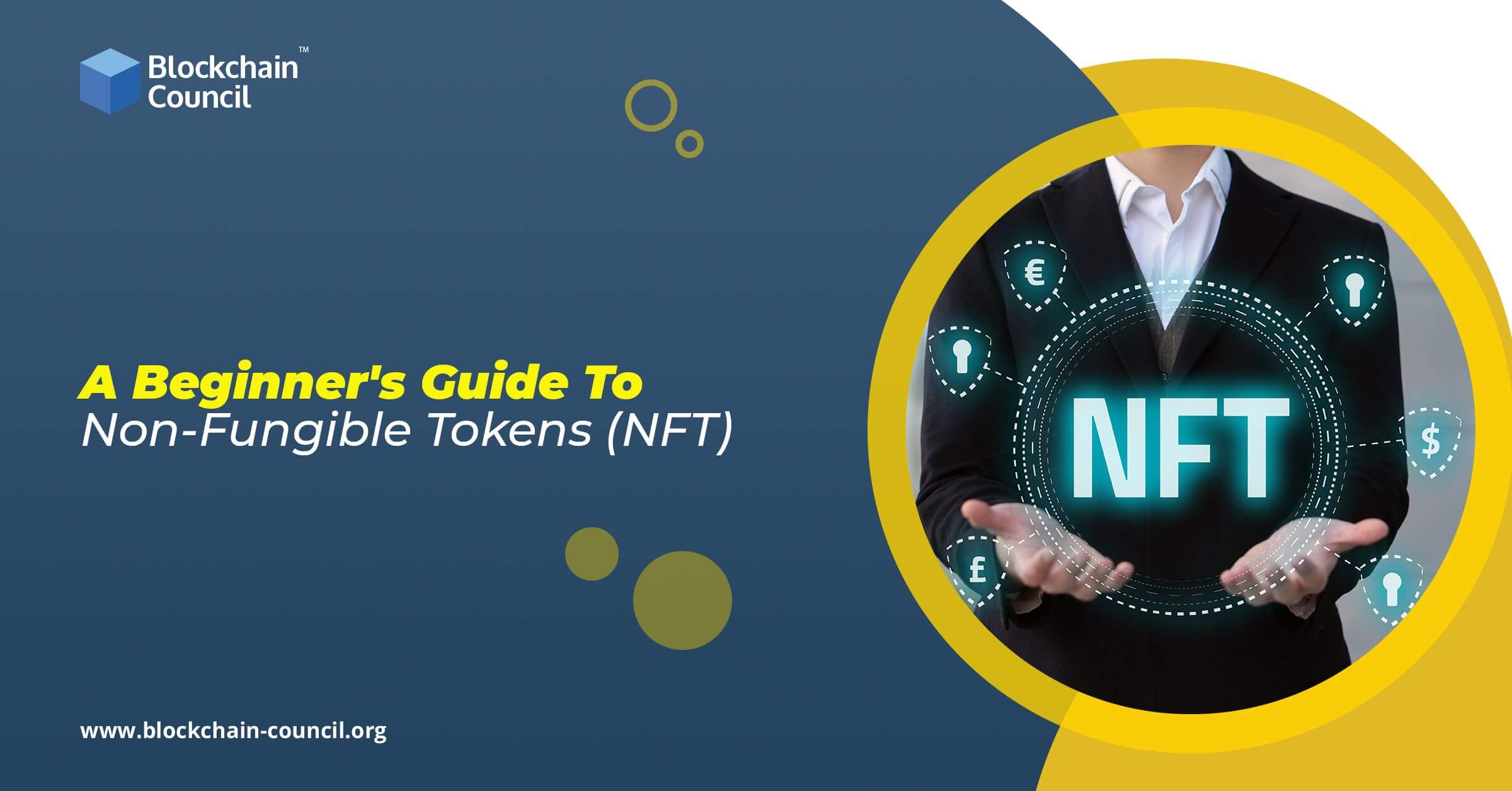
- Blockchain Council
- August 09, 2022
With each ticking of the clock watch, we are rushing towards the end of August. Though this would have been a regular thing in any other usual scenario, this time, it is special. Special for all those thousands of Ethereum investors who are anxiously waiting for the ‘Merge.’
Crypto enthusiasts call the Merge the next big milestone for the world’s second-largest cryptocurrency ecosystem. With this long-awaited technological upgrade, Ethereum is moving from the Proof-of-Work algorithm to the Proof-of-Stake consensus system. As of late, the Merge is one of the hottest topics of discussion in the crypto community, and investors are going cray-cray over it. Speculations and projections revolving around the future of Ethereum are flooding the social media platforms. Well, all this makes sense because if executed per the set plan, the Merge will place the Ethereum blockchain at the forefront of crypto evolution. The upgrade will make Ethereum the first-ever blockchain network to undertake consensus overhauling at a scale where its market share is among the strongest in the field.
This article has tried to cover all the important facts related to Ethereum’s Merge upgrade. We will talk about the core terminology behind the Merge, its importance, and how it is likely to change Ethereum. Let’s start:
The Merge: An Overview
The Merge is a term used for describing the integration of the existing execution layer of Ethereum with the Beacon Chain. Paving the way for Ethereum’s new version called Ethereum 2.0, the tech upgrade will enhance the functionality of the core ETH infrastructure. The shift to the PoS consensus mechanism will initiate the era of a sustainable, eco-friendly, and more efficient blockchain network for the Ethereum community. The upgrade will allow Ethereum to introduce scalability upgrades in the future, which were not possible under the PoW mechanism. This will help the blockchain to reduce its energy consumption, expand scalability, and improve its security standards, as outlined in its vision statement. The Ethereum blockchain developer community will get access to a plethora of improved services on the portal after the Merge upgrade.
The Expected Date
As per the official updates, the Merge will likely go on floors by Q3 or Q4 this year. Ethereum developers are working toward a soft deadline set for September 19, 2022. However, the set date is subject to changes depending upon the success of the final testnet merge called Goerli, scheduled to take place in mid-August 2022. Other factors that might affect the release are subsequent client rectifications and the hashrate of the currently working miners. The team is leaving no stone unturned to bring the best version of the Merge upgrade to the market for the users.
An Understanding of Ethereum 2.0
Everything said and done about the Merge upgrade is incomplete without mentioning Ethereum 2.0. In fact, the Merge is a powerful tool that will turn Ethereum 2.0 into reality for the global community of Ethereum fans and Ethereum developers who are waiting anxiously for the change.
In Layman’s words, Ethereum 2.0 is a blockchain technology version that will rely on the Proof-of-Stake consensus mechanism for verifying transactions through staking. Through staking, Ethereum will replace the PoW paradigm that is notoriously famous for its energy-intensive infrastructure. In PoW, miners need to use high-powered equipment and energy supply for completing complicated mathematical operations called hashes.
Mining requires rigorous electricity supply for validation of transactions right before their recording on the public blockchain network. ETH and BTC devour a mammoth amount of electricity during mining. Reports show that ETH’s current annual power consumption is nearly equal to the supply consumption of Finland. The carbon footprint of the crypto network is equal to that of Switzerland. Heavy energy consumption raises pollution levels, disrupting the sanctity of the environment.
Now, with the Merge, Ethereum is looking forward to reducing the burden on the environment by switching to the PoS system. The shift is expected to shrink the carbon footprint by up to 99.95%, making ETH a sustainable option for environment-conscious crypto fans.
Since April 2022, Ethereum has been experimentally running two parallel chains. One uses the Proof-of-Work module, while the other test chain operates via the Proof-of-Stake module. The highly-anticipated Merge upgrade will combine Ethereum’s Mainnet blockchain (ETH1) with the new PoS-infused Beacon Chain (ETH2) into one unified blockchain network. The Beacon Chain is the main pillar of Ethereum’s 2.0 infrastructure. It thrives as a separate chain and runs parallel to the main blockchain. Created on December 1, 2020, the Beacon Chain has up until now worked as a testnet for Ethereum 2.0. However, with the Merge, Beacon will come into the actual powerplay, fulfilling the core purpose for which the team designed it.
Things To Take Into Consideration
We very well know by now that the Merge is not just a regular upgrade of a crypto architecture. Rather, it is a complete overhaul of Ethereum’s consensus mechanism. Thus, it has garnered the industry’s attention from good and bad actors. Where investors are waiting for the upgrade to enjoy better facilities, intruders are working on their cheating plans. It is likely that Ethereum users might face some difficulties in the initial stages of the upgrade. This is where hackers will try to play their cards by exploiting innocent investors and taking advantage of their lack of knowledge on the upgrade.
Things to consider if you are:
-
ETH owners and holders
The PoS upgrade will bring no change in the entire history of Ethereum, starting from the genesis until today. The funds stored in digital wallets will continue to have the same value. They will be easily accessible post the Merge. No action is required to initiate the upgrade on behalf of investors and token owners.
-
Staking Nodes
Staking node operators and providers need to run a consensus layer client along with an execution layer. To facilitate communication between the two layers, the operators must first authenticate them with a shared JWT secret. They also have to fix a free recipient address for receiving the transaction fee tips.
-
Non-validating nodes and infrastructure providers
Up until now, an execution layer client was sufficient to receive, validate, and propagate blocks. However, running clients for the execution and consensus layers both will be essential after the Merge. The operators will have to authenticate both the layer clients via a shared JWT secret to facilitate communication between each other. The two clients work via a new Engine API.
-
Smart contract developers and DApp developers
The upgrade is designed to impact dapp and smart contract developers the least. However, they need to be aware of the following changes:
- block infrastructure
- block timing
- opcode alterations
- sources of on-chain randomness
- concept of safe head and finalized blocks
Ethereum: The Era of the Merge
At the recently held Ethereum Community Conference in Paris, the firm’s co-founder Vitalik Buterin shared his expectations from Ethereum post the PoS shift. Scaling is one of the major milestones set by Ethereum for the Merge. Ethereum chief claimed that the upgrade would allow the blockchain to process 10,000 transactions per second. However, the Merge is the first step of the five steps set by the team for its future developments. The five stages include:
-
The Merge
This is focused on the shift from proof of work to proof of stake. It characterizes the merger of Ethereum’s Mainnet with the Beacon Chain.
-
The Surge
The team aspires to bring sharding to the protocol in the second stage. This will serve as a scaling solution that will divide the core network into individual parts called shards. The process will break the computational burden presently levied on the mainnet.
-
The Verge
This stage introduces the concept of ‘verkle trees.’ It incorporates an upgrade to Merkle proofs. The phase will help increase ETH node operators’ data storage capacity.
-
The Purge
It relates to data storage for validators. The upgrade will strive to lessen the space for the hard drive that is used by the validators. The process will help to streamline the congestion on the network.
-
The Splurge
This last upgrade will strive to deliver a chain of updates that will enhance the overall working experience of the network.
Misconceptions related to The Merge
The most common misconceptions about The Merge hovering over the crypto domain are:
-
Fall in Gas Fee
The upgrade will alter the consensus algorithm and will not enhance the network’s capacity. Thus, there will not be a downfall in the gas fee charges. However, several scaling solutions focused on layer 2 are in the development phase and will work on this issue.
-
Increase in Transaction Speed
The TPS on the mainnet will remain the same post the upgrade, though subject to some minute changes.
-
The Merge will cause network downtime
The upgrade is designed to support zero downtime to keep working at all times.
-
All Staked ETH will be withdrawn post the Merge
The team has set to allow the validators to exit 43,200 ETH daily.
-
The network requires staking of 32 ETH for running a node
The Ethereum network has two kinds of nodes- one that proposes blocks and the other that cannot. The nodes that do not have to commit ETH do not propose blocks. Though, they are important for the network’s security as they hold block proposers accountable.
Conclusion
Ethereum shines as the second-largest cryptocurrency network in the world. Any change in its ecosystem is bound to impact the global crypto market. This is why the Merge is seen as one of the most historical developments in the sector that will revolutionize the working paradigms for Ethereum. Using PoS will pave the way for Ethereum’s journey towards a sustainable infrastructure that also ensures high-end scalability. The upgrade is set to hit the market in September 2022, and we are sure to expect a lot of favourable and unfavourable chaos within the crypto space all this while. The shift is likely to unlock new opportunities for ETH investors.
If you are confused about how to learn blockchain concepts, then Blockchain Council’s crypto courses can be your best resort. The platform offers a wide range of blockchain certification programs for crypto enthusiasts. The courses are designed to offer subjective and practical knowledge to users.





































































 Guides
Guides News
News Blockchain
Blockchain Cryptocurrency
& Digital Assets
Cryptocurrency
& Digital Assets Web3
Web3 Metaverse & NFTs
Metaverse & NFTs
